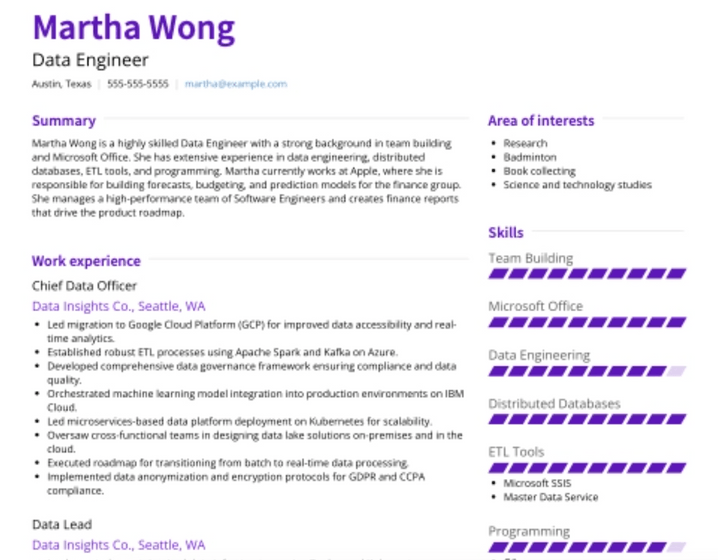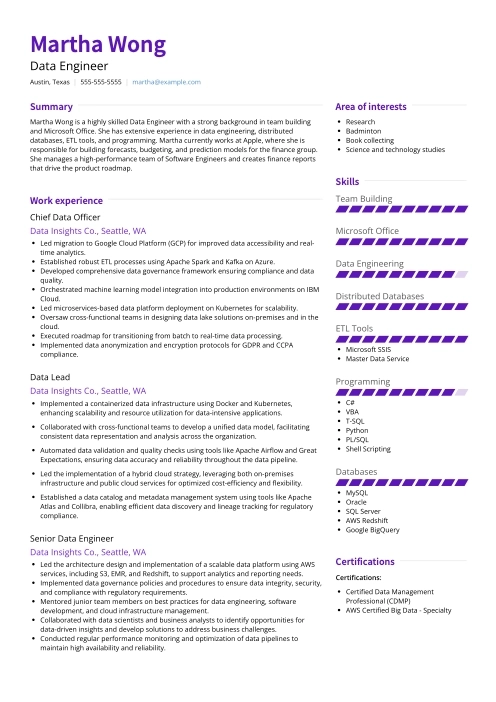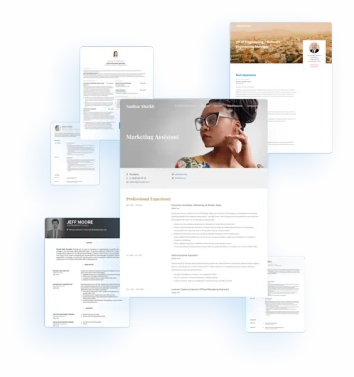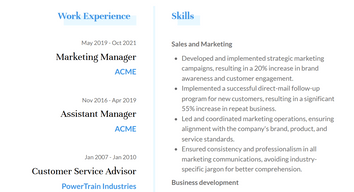
Is a Four Page Resume Too Long? Four-Page Resumes Tips, Pitfalls, and Advice

A four-page resume can be a valuable tool for professionals with extensive experience and accomplishments. This guide will cover the benefits and drawbacks of a longer resume, practical tips for maintaining readability, and strategies for effective formatting. We'll explore how to highlight your key achievements and ensure your resume stands out.
Additionally, we'll provide expert opinions on resume length, common pitfalls to avoid, and industry-specific guidelines. You'll learn how to balance detail and conciseness, incorporate relevant keywords, and structure your resume for maximum impact.
Whether you're an academic, senior executive, or applying for a federal job, this comprehensive guide will help you create a compelling four-page resume.

When a Four-Page Resume is Acceptable
In most cases, a concise resume is preferred, but there are situations where a four-page resume is acceptable and even necessary. This is particularly true for individuals with extensive work histories, multiple relevant projects or publications, and those applying for senior-level positions where detailed information is crucial.
Situations Where a Longer Resume Might Be Appropriate
- Extensive Work History or Experience: Professionals with a long career spanning several decades, especially in dynamic fields, may need more space to adequately describe their roles and accomplishments.
- Multiple Relevant Projects or Publications: Individuals involved in numerous significant projects, research, or publications should detail these to showcase their contributions and expertise.
- Senior-Level Positions: Applicants for executive or senior management roles often require detailed descriptions of their strategic contributions, leadership roles, and high-impact projects.
How to Format and Structure a Four-Page Resume Effectively
- Use Clear Headings and Subheadings: Organize content under relevant headings to make it easy for the reader to navigate. Examples include "Professional Experience," "Projects," "Publications," and "Skills."
- Prioritize Content: Place the most relevant and impressive information on the first two pages, with additional details following. This ensures key information is seen first.
- Concise Bullet Points: Use bullet points to summarize roles, responsibilities, and achievements concisely. Avoid lengthy paragraphs.
- Consistent Formatting: Maintain a uniform format throughout the resume. Use the same font style, size, and formatting for headings and bullet points.
- Relevant Information Only: Ensure all included information is relevant to the job you are applying for. Extraneous details can detract from your key qualifications.
- Professional Layout: Use a clean, professional layout with ample white space to make the document easy to read.
Drawbacks of a Four-Page Resume
While a four-page resume can provide a comprehensive overview of a candidate's qualifications, it comes with several drawbacks. A lengthy resume can overwhelm recruiters, making it difficult for them to quickly identify the most relevant information.
With a four-page resume, Important details may get lost amidst the extensive content, reducing the impact of key achievements and skills. The readability of a four-page resume can also suffer, leading to a less engaging document. Here are some common pitfalls associated with an overly long resume and tips on how to avoid them:
- Risk of overwhelming the recruiter: Recruiters often have limited time to review each resume. Ensure your resume is concise and includes only the most relevant information.
- Important information might get lost: When there is too much content, key points can be overlooked. Highlight your most significant accomplishments and skills at the beginning of each section.
- Negative impact on readability: Lengthy resumes can become cluttered and difficult to read. Use clear headings, bullet points, and whitespace to improve readability.
Common Four Page Resume Pitfalls and How to Avoid Them
- Including too much irrelevant information
- Avoidance Tip: Tailor your resume to the specific job you're applying for, focusing on relevant experiences and skills.
- Using long, dense paragraphs
- Avoidance Tip: Break down information into short, impactful bullet points to make it easier to scan.
- Lack of focus and structure
- Avoidance Tip: Organize your resume into clear sections with headings and subheadings, and maintain a logical flow.
- Repetitive content
- Avoidance Tip: Review your resume for redundancy and ensure each point adds unique value.
- Not prioritizing key information
- Avoidance Tip: Place the most important and relevant information at the top of each section to capture attention quickly.
Tips for Condensing Your Four Page Resume
- Focus on relevant experience: Highlight experiences and skills that are directly related to the job you're applying for.
- Use concise language: Avoid lengthy descriptions; get straight to the point with impactful, action-oriented language.
- Remove outdated or less relevant details: Eliminate older experiences that are not pertinent to your current career goals.
- Combine similar roles or responsibilities: Merge roles with overlapping responsibilities to avoid redundancy.
Examples of Effective Resumes by Length
One-Page Resume:
- Content: Focuses on the most relevant skills and experiences; uses concise language.
- Format: Clean and simple layout; easy to read and scan quickly.
Two-Page Resume:
- Content: Provides a detailed overview of work history and skills; includes key accomplishments.
- Format: Balanced use of white space and text; clear section headings for easy navigation.
Three-Page Resume:
- Content: Covers extensive work history and a diverse skill set; includes detailed descriptions.
- Format: Organized layout with clear headings; uses bullet points to maintain readability.
Four-Page Resume:
- Content: Comprehensive coverage of a long and varied career; includes in-depth descriptions of roles and achievements.
- Format: Structured sections with clear headings and subheadings; uses bullet points and concise paragraphs to maintain readability.
The General Rule of Resume Length
The general guideline for resume length is typically one to two pages. This standard is based on the notion that most hiring managers and recruiters prefer a concise overview of a candidate's qualifications that can be quickly reviewed.
However, there are exceptions to this resume length rule where longer resumes are acceptable or even necessary, such as in academic CVs, federal job applications, and for senior executive positions. These exceptions are due to the need for detailed documentation of extensive experience, publications, or specific qualifications.
Common Guidelines for Resume Length:
- One to Two Pages: Most resumes should aim for this length to ensure they are concise and easy to read.
Exceptions to the Rule:
- Academic CVs: These often exceed two pages due to the need to list publications, research, and academic accomplishments.
- Federal Jobs: Applications for federal positions may require detailed information, resulting in longer resumes.
- Senior Executives: Executives often have extensive career histories and accomplishments that justify a longer resume.
Reasons Behind These Guidelines:
- Brevity and Focus: Hiring managers typically spend a short time reviewing each resume, so brevity ensures that the most relevant information is seen.
- Relevance: A concise resume highlights the most pertinent skills and experiences, making it easier for recruiters to assess suitability for the role.
- Clarity: Shorter resumes are generally clearer and more readable, reducing the risk of important details being overlooked.
- Efficiency: For most roles, a one to two-page resume is sufficient to showcase a candidate’s qualifications without overwhelming the reader.
Now, let’s answer the frequently asked questions around four page resumes.
Why would someone need a four-page resume?
A four-page resume might be necessary for individuals with extensive work experience, numerous certifications, publications, or other professional achievements. This is often seen in academic, scientific, or senior executive roles where detailing a long and complex career history is essential.
How can I ensure my four-page resume is readable?
To maintain readability, use clear headings, bullet points, and concise language. Organize your resume into well-defined sections, use white space effectively, and prioritize the most relevant information at the top of each section.
How do I avoid overwhelming the recruiter with a four-page resume?
To avoid overwhelming the recruiter, focus on clarity and organization. Use a logical structure, break information into easily digestible sections, and avoid long paragraphs. Highlight key points and achievements to ensure they stand out.
Are there specific industries where a four-page resume is more acceptable?
Yes, certain industries such as academia, research, and federal government positions may require detailed resumes that exceed the typical one to two-page length. Senior executives in corporate settings may also need longer resumes to document their extensive career histories.
How do I balance detail and conciseness in a four-page resume?
Balance detail and conciseness by focusing on the most significant and relevant aspects of your career. Use bullet points for responsibilities and achievements, keep descriptions brief and to the point, and avoid redundancy by combining similar roles or experiences.
What formatting tips should I follow for a four-page resume?
Use a clean and professional format with consistent font styles and sizes. Employ clear headings and subheadings, bullet points, and adequate spacing to improve readability. Ensure your contact information is easily accessible at the top of the first page.
Should I tailor a four-page resume for each job application?
Yes, tailoring your resume for each job application is essential. Highlight the experiences and skills most relevant to the job, and consider adjusting the order of sections to prioritize the most important information for each specific role.
How can I effectively showcase my achievements in a four-page resume?
Showcase your achievements by using quantifiable metrics and specific examples. Highlight major projects, awards, and recognitions. Use bullet points to list these achievements under each relevant role to make them stand out.
How do I know if I need a four-page resume?
You might need a four-page resume if you have an extensive professional history, numerous relevant qualifications, or if you are applying for positions that require detailed documentation of your career, such as academic, research, or high-level executive roles.
How should I structure a four-page resume?
Structure your four-page resume with clear and logical sections. Start with a strong summary or objective, followed by your work experience, education, certifications, publications, professional memberships, and any other relevant sections. Ensure each section is clearly labeled and easy to navigate.
Is it better to have a detailed four-page resume or a concise two-page one?
The best length for your resume depends on your career history and the job you are applying for. If you have extensive experience and qualifications relevant to the position, a four-page resume might be appropriate. However, ensure it remains focused and easy to read.
What are some common mistakes to avoid in a four-page resume?
Common mistakes include including irrelevant information, using long and dense paragraphs, lacking clear structure, and not prioritizing key information. Avoid redundancy and ensure that every section of your resume adds value and relevance to your application.
Can I include graphics or images in my four-page resume?
Including graphics or images can be risky unless they are professional and relevant, such as charts demonstrating your achievements or publications. Avoid using photos of yourself unless explicitly requested by the employer, as this can be seen as unprofessional.
How can I make sure my most important information is noticed in a four-page resume?
Ensure your most important information is noticed by placing it at the top of each section, using bold or italicized text for emphasis, and using bullet points for key achievements. Organize your resume in a way that highlights your most relevant experiences and skills.
Should I include a cover letter with my four-page resume?
Yes, including a cover letter with your four-page resume is generally recommended. The cover letter allows you to introduce yourself, explain why you are a good fit for the position, and highlight the most important aspects of your resume.
How do I maintain a professional tone in a four-page resume?
Maintain a professional tone by using formal language, avoiding slang or overly casual expressions, and focusing on your professional achievements and qualifications. Proofread your resume carefully to avoid any grammatical or typographical errors.
What should I do if my resume exceeds four pages?
If your resume exceeds four pages, consider reviewing and trimming any non-essential information. Focus on the most relevant and impactful experiences and qualifications, and look for ways to combine or condense similar roles or responsibilities.
How often should I update my four-page resume?
Update your resume regularly, especially after significant career changes, such as new job roles, certifications, or accomplishments. Keeping your resume current ensures that you are always prepared for new opportunities and can quickly tailor it for specific job applications.
Are there any software tools that can help me create a four-page resume?
Yes, there are many software tools available to help you create a professional four-page resume, including Microsoft Word, Google Docs, and specialized resume builders like VisualCV. These tools offer templates and formatting options to help you structure your resume effectively.
How can I ensure my four-page resume is ATS-friendly?
To ensure your four-page resume is ATS-friendly, use a simple and clean layout, avoid complex formatting, and use standard section headings like "Work Experience," "Education," and "Skills." Incorporate relevant keywords from the job description to help your resume pass through Applicant Tracking Systems (ATS).
How should I format a four-page resume?
Format your four-page resume with a clean, professional layout. Use a standard font like Arial or Times New Roman, and keep font sizes between 10-12 points. Use bold and italics sparingly to highlight key sections. Incorporate bullet points for clarity and white space to improve readability.
What job titles should I include on my four-page resume?
Include all relevant job titles that demonstrate your career progression and experience. Focus on positions that are pertinent to the job you are applying for. Ensure each title is accompanied by a brief description of your responsibilities and achievements.
How do I handle employment gaps on a four-page resume?
Address employment gaps directly by including a brief explanation within the relevant time periods. You can also highlight any skills or experiences gained during those gaps, such as volunteer work, freelance projects, or further education.
How should I list my skills on a four-page resume?
List your skills in a dedicated section, categorizing them by type (e.g., technical skills, soft skills). Use bullet points for each skill, and where possible, provide context or examples of how you have applied these skills in your work experience.
Should I include all my education details on a four-page resume?
Include your highest level of education and any other relevant degrees or certifications. Detail any special honors or awards, but avoid listing every single course unless they are particularly pertinent to the job you are applying for.
How do I decide what achievements to include on my four-page resume?
Include achievements that are quantifiable and relevant to the job you are seeking. Use metrics to showcase your impact, such as percentages, dollar amounts, or other specific figures that highlight your contributions.
How should I order the sections of my four-page resume?
Order the sections of your resume by relevance to the job. Typically, start with a summary or objective, followed by work experience, education, skills, certifications, publications, and any other relevant sections. Tailor the order based on what you want to emphasize.
Can I use color in my four-page resume?
Using color can help make your resume visually appealing, but it should be used sparingly and professionally. Stick to one or two complementary colors and ensure that the text remains easily readable. Avoid overly bright or flashy colors.
How do I handle international job titles and experiences on a four-page resume?
When listing international job titles and experiences, use the English equivalent if it is not obvious. Provide brief explanations if the job title or responsibilities may not be clear to a recruiter in your target country. Highlight any cross-cultural skills gained.
Should I include references in my four-page resume?
Typically, references are not included directly on the resume. Instead, you can add a statement such as "References available upon request." Prepare a separate document with your references to provide when asked.
How detailed should job descriptions be on a four-page resume?
Job descriptions should be concise yet detailed enough to convey your responsibilities and achievements. Use bullet points to list key tasks and accomplishments, focusing on those that are most relevant to the job you are applying for. Avoid overly lengthy paragraphs.
How do I incorporate keywords into a four-page resume?
Incorporate keywords from the job description naturally into your resume. Focus on including relevant skills, job titles, and industry-specific terms that match the job you are applying for. This helps your resume pass through Applicant Tracking Systems (ATS).
Is it acceptable to use a resume template for a four-page resume?
Yes, using a resume template can help ensure your resume is well-structured and professionally formatted. Choose a template that is clean and customizable, allowing you to tailor it to your specific needs and the job you are applying for.
How should I format job titles and company names on a four-page resume?
Format job titles and company names consistently throughout your resume. Typically, job titles are bolded or italicized, and company names are listed alongside or below the job title. Include the location and dates of employment for each role.
What personal information should I include on a four-page resume?
Include your full name, phone number, email address, and LinkedIn profile. Avoid including sensitive personal information such as your full address, date of birth, or social security number. Only include personal information relevant to your professional identity.
- When a Four-Page Resume is Acceptable
- Situations Where a Longer Resume Might Be Appropriate
- How to Format and Structure a Four-Page Resume Effectively
- Drawbacks of a Four-Page Resume
- Tips for Condensing Your Four Page Resume
- Examples of Effective Resumes by Length
- The General Rule of Resume Length
- Why would someone need a four-page resume?
- How can I ensure my four-page resume is readable?
- How do I avoid overwhelming the recruiter with a four-page resume?
- Are there specific industries where a four-page resume is more acceptable?
- How do I balance detail and conciseness in a four-page resume?
- What formatting tips should I follow for a four-page resume?
- Should I tailor a four-page resume for each job application?
- How can I effectively showcase my achievements in a four-page resume?
- How do I know if I need a four-page resume?
- How should I structure a four-page resume?
- Is it better to have a detailed four-page resume or a concise two-page one?
- What are some common mistakes to avoid in a four-page resume?
- Can I include graphics or images in my four-page resume?
- How can I make sure my most important information is noticed in a four-page resume?
- Should I include a cover letter with my four-page resume?
- How do I maintain a professional tone in a four-page resume?
- What should I do if my resume exceeds four pages?
- How often should I update my four-page resume?
- Are there any software tools that can help me create a four-page resume?
- How can I ensure my four-page resume is ATS-friendly?
- How should I format a four-page resume?
- What job titles should I include on my four-page resume?
- How do I handle employment gaps on a four-page resume?
- How should I list my skills on a four-page resume?
- Should I include all my education details on a four-page resume?
- How do I decide what achievements to include on my four-page resume?
- How should I order the sections of my four-page resume?
- Can I use color in my four-page resume?
- How do I handle international job titles and experiences on a four-page resume?
- Should I include references in my four-page resume?
- How detailed should job descriptions be on a four-page resume?
- How do I incorporate keywords into a four-page resume?
- Is it acceptable to use a resume template for a four-page resume?
- How should I format job titles and company names on a four-page resume?
- What personal information should I include on a four-page resume?

Written By
Madison Norton
VP Marketing & Resume Expert
Madison is the VP Marketing and General Manager at VisualCV. He's a seasoned marketing leader, resume writing and career marketing expert and now helping people grow their own career marketing strategies to build a career they love.

Review the International Resume + CV Guide for 2025. Get tips crafting a standout resume tailored to each location's unique job market requirements.
February 6, 2025
Read Post

VP Marketing & Resume Expert

Your resume should be short enough to hold employers' attention, but long enough to highlight all of your important skills. Finding the right balance can be tricky.
February 8, 2025
Read Post

Community Success Manager & CV Writing Expert

If you want to highlight your skills in a resume with a reverse-chronological Work Experience section, a hybrid resume might work for you.
December 11, 2023
Read Post

Community Success Manager & CV Writing Expert
Copyright ©2025 Workstory Inc.